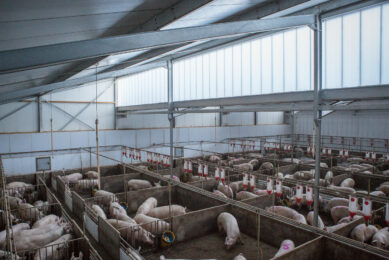Manipulable materials – are you using them?
It’s an ongoing discussion – mainpulable materials in a pig house seem quite incompatible with a slatted flooring system. Why not consider the relatively simple idea of straw racks?
| In the UK, as part of our legislative requirement, growing and finishing pigs must have permanent access to a sufficient quantity of material (such as | |
 | straw, hay, wood, sawdust, mushroom compost, peat) to enable proper investigation and manipulation activities. |
farmers are ignoring this or only paying lip service to it, especially if the pigs are on slatted floors and materials either block up the slats or drop straight through. How do you get over the problem or are there any innovative ideas to solve the problem?
Scrutiny
Increasingly the way we keep pigs is coming under more and more scrutiny. The pressure from welfare lobbies is growing and both national and EU government are listening to them.
So how do we keep pigs in a welfare-friendly way yet maintain many of the production advantages that have been seen with slatted floor systems over the years?
From a veterinary point of view, I like them, as the pigs are cleaner, dung and urine is easily disposed of, there is usually less enteric disease and also PMWS.
On the other hand I suspect the pigs get bored and start using other pigs as potentially manipulable materials, until a full blown tail-biting or ear-biting epidemic starts.
Toys
Toys and other objects are sometimes used, but according to our welfare codes these should be changed every week again to stop boredom. Balls, lumps of wood, chains, alkathene-pipe helicopters have all been used, but with moderate success.
On one farm, I saw straw racks being used, which were surprisingly effective. A relatively simple idea, which gave the pigs access to straw without it blocking up the slats or having to chop it up and wasting most of it.
Have you got any ideas that can be easily adopted to solve the problem?
Related articles
- British Farmers Worried About ‘Pig Toy’ Regulations
- Straw, hay required for pigs under new UK welfare regulations











